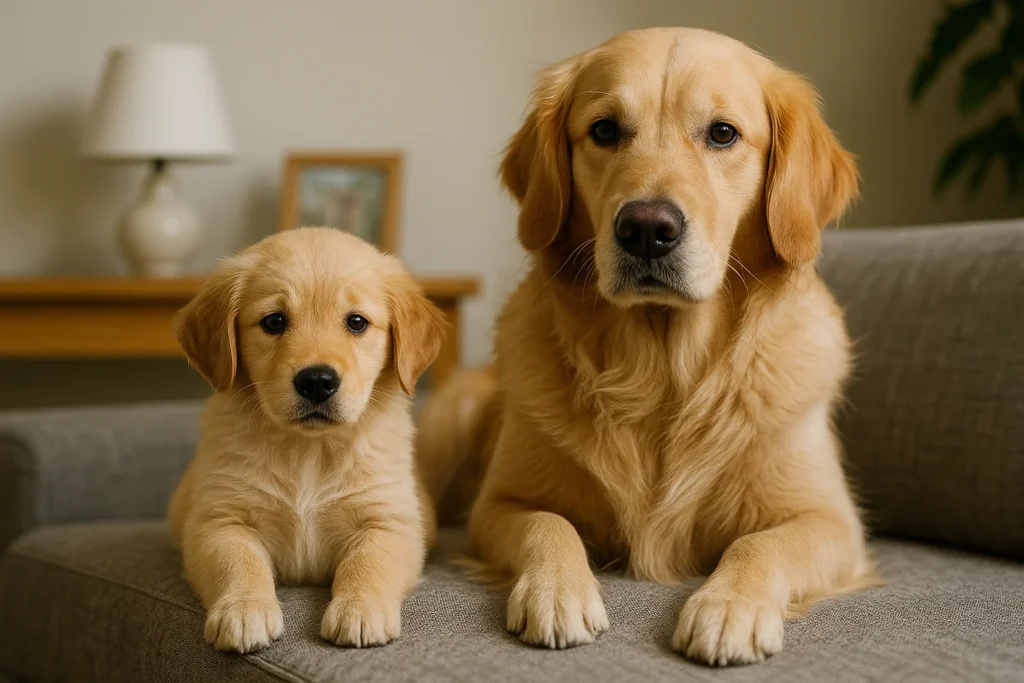Introduction: Can Love Be Duplicated?
Imagine saying goodbye to your beloved pet, that furry family member who shared your secrets, comforted your sorrows, and brought endless joy. Now imagine being told there’s a way to bring them back – not just a look-alike, but a genetic twin, a carbon copy of their very essence. For years, this idea belonged to science fiction movies. But in 2025, pet cloning has gone mainstream, becoming more affordable and accessible than ever before.
This isn’t just a niche service for the super-rich anymore. Companies like ViaGen Pets are at the forefront, offering a glimmer of hope to grieving owners. But as the technology advances and becomes more common, it sparks intense debates. Is it a testament to unconditional love, or an ethical minefield? What does it truly mean to “recreate” a companion? This article will dive into the booming world of pet cloning, exploring the powerful emotions that drive it, the scientific realities behind it, and the complex ethical questions it raises for our relationships with animals.
The Price of Immortality: Economics and Accessibility in 2025
While still a significant investment, the cost of bringing a genetic duplicate of your pet into the world has come down dramatically. What once cost hundreds of thousands of dollars is now within reach for many affluent pet owners, making it a growing segment of the specialized pet care industry.
ViaGen Pets and the Expanding Market
ViaGen Pets stands as a prominent name in this field, offering commercial cloning services primarily for dogs, cats, and even elite horses. They operate by taking a small tissue sample from your pet, even after they’ve passed away (provided the sample is collected soon enough and properly stored). This sample contains the precious DNA needed for the cloning process.
In 2025, the price tag for cloning a dog typically hovers around $50,000, while a cat might cost approximately $35,000. These figures, while still substantial, represent a considerable reduction from the early days of cloning when costs were prohibitive to all but a handful of billionaires. This increased “affordability” (relative to historical prices) has opened the door for a wider pool of grieving pet owners, contributing to a surge in cloned cats, dogs, and even elite horses. The market for cloning top-tier horses, particularly those with valuable genetic traits for racing or breeding, remains robust due to the potential for significant financial returns.
This growth indicates a strong demand driven by emotional attachment, pushing the industry to streamline processes and potentially expand its global reach to meet client needs wherever they may be.
The Emotional Heartbeat: Grief, Love, or Obsession?
At the core of the pet cloning phenomenon lies a powerful human emotion: the profound bond we share with our animal companions. For many, the decision to clone a pet is deeply personal, stemming from overwhelming grief and a desperate desire to prolong a cherished connection.
A Quest for Connection
- Coping with Loss: When a beloved pet passes away, the grief can be as intense as losing a human family member. Cloning offers a unique form of solace, a tangible way to “bring back” a piece of what was lost. Owners often cling to the hope that a clone will fill the void left by their departed friend.
- Unconditional Love: For some, it’s an extension of unconditional love. They see their pet as irreplaceable, a unique soul that deserves to continue. Cloning becomes an act of devotion, a way to honor the special connection they shared.
- Fear of the Unknown: The thought of never again experiencing that particular personality, that unique way a pet snuggled or played, can be daunting. Cloning offers a sense of control over an uncontrollable event – death.
- The Line to Obsession: While driven by love and grief, there are questions about where this desire crosses into obsession. Ethicists and psychologists sometimes ponder whether cloning delays the natural grieving process or creates unrealistic expectations, hindering an owner’s ability to move forward. The emotional journey of owning a clone can be complex, as the new animal, while genetically identical, will develop its own distinct personality and life.
Ultimately, the emotional drivers are deeply personal, reflecting the immense value and companionship pets bring into our lives.
The Public Spotlight: Celebrity Endorsements and High-Profile Cases
Nothing brings a niche industry into the mainstream faster than celebrity endorsement. High-profile cases of cloned pets belonging to public figures have undoubtedly played a significant role in raising awareness and, for some, normalizing the idea of pet cloning.
A Famous Footprint
While there may not be new, breaking 2025 celebrity cloning announcements at this exact moment, past cases continue to echo through the industry. Perhaps the most famous example is Barbra Streisand, who in 2018 revealed she had cloned her beloved Coton de Tulear dog, Samantha, twice. She named the clones Miss Violet and Miss Scarlett. This disclosure ignited a global conversation, moving pet cloning from a fringe scientific curiosity to a topic discussed in mainstream media and among pet owners worldwide.
Such high-profile cases have a dual effect:
- Normalizing the Technology: They demonstrate that cloning is not just theoretical but a real, accessible service (for those with the means).
- Fuelling Demand: The visibility generated often sparks curiosity and interest among other affluent individuals who may then consider the service for their own pets.
- Shaping Perception: When a beloved celebrity uses the technology, it can lend an aura of acceptance and even desirability to pet cloning, shifting public perception.
These instances, whether recent or from a few years ago, serve as powerful testimonials that contribute to the ongoing growth and public profile of the pet cloning industry.
Ethical Questions: Identity, Animal Rights, and Genetic Diversity
As pet cloning becomes more prevalent, it ignites a fierce debate among ethicists, animal welfare advocates, and even some scientists. The central questions revolve around the nature of identity, the welfare of the animals involved, and the broader implications for animal populations.
A Moral Minefield
- The Question of Identity: Is a clone truly the “same” pet? Scientifically, it’s a near-perfect genetic copy. However, personality, memories, and even subtle physical traits are shaped by environment, experiences, and chance developmental factors. An owner expecting an exact reincarnation might face disappointment and psychological challenges. This raises the ethical concern of whether we are creating an individual with the expectation of it being another.
- Animal Welfare Concerns: The cloning process itself is not always efficient. It often requires numerous attempts, involving multiple surrogate mothers and egg donors.
- Low Success Rates: While improving, success rates can still be low, meaning many embryos may not survive or fully develop.
- Health Issues: Cloned animals, particularly in earlier stages of the technology, sometimes had a higher incidence of birth defects or health problems, though this has reportedly decreased with technological advancements.
- Exploitation: Some argue that the extensive use of donor animals (often kept solely for breeding or as surrogates) raises concerns about their welfare and the ethical treatment of animals as mere biological tools for human emotional satisfaction.
- Genetic Diversity: If cloning becomes widespread, particularly of “elite” or “perfect” animals, there’s a risk of reducing genetic diversity within a breed or species. This could make populations more vulnerable to diseases or less adaptable to environmental changes in the long run.
- “Designer” Pets: The ethical slippery slope to “designer” pets, where animals are created based on specific traits without considering their well-being, is another concern for many animal rights groups.
Organizations like the Humane Society and PETA generally oppose pet cloning, citing animal welfare concerns related to the cloning process and the potential for creating animals solely to fulfill human desires rather than prioritizing their inherent value. Bioethics panels often convene to discuss these complex issues, weighing the potential benefits to grieving owners against the potential harm to animal populations and individual animals.
Scientific Realities: What Cloning Really Means
Amidst the emotional longing and ethical debates, it’s crucial to understand the scientific reality of pet cloning. It’s often misunderstood, with public perception sometimes confusing it with resurrection or time travel.
Not a Carbon Copy of Consciousness
- Genetic Twin, Not Identical Being: A clone is a genetic duplicate – essentially an identical twin born at a later date. It shares the same DNA as the original pet. However, it will not have the same memories, learned behaviors, or personality. Just like human identical twins, while they look alike, they are distinct individuals.
- The Process: Somatic Cell Nuclear Transfer (SCNT): The most common method used in pet cloning is called Somatic Cell Nuclear Transfer (SCNT). This involves:
- Taking a somatic (body) cell from the original pet (e.g., skin cell, cheek swab) and extracting its nucleus, which contains the pet’s DNA.
- Taking an egg cell from a donor animal and removing its nucleus.
- Inserting the nucleus from the original pet’s somatic cell into the enucleated egg cell.
- Stimulating this reconstructed egg with an electric current to begin cell division, forming an embryo.
- Implanting the embryo into a surrogate mother.
- The surrogate mother carries the pregnancy to term, resulting in the birth of the cloned animal.
- Environmental Influence: The clone’s environment, upbringing, diet, training, and unique life experiences will shape its personality, temperament, and even subtle physical characteristics (like coat patterns, which can be influenced by developmental factors even in genetically identical animals). This means your cloned pet will be an individual, with its own quirks and preferences, distinct from the original in personality.
- Health of Clones: While early cloning efforts sometimes resulted in health issues, the technology has significantly improved. Most cloned pets born today are generally considered healthy and live normal lifespans, though some studies still point to potential epigenetic differences that may manifest over time.
Understanding these scientific facts helps manage expectations and ground the conversation about pet cloning in reality, rather than fantasy.
Conclusion: A Future Shaped by Love and Technology
The year 2025 marks a fascinating turning point in the world of pet companionship. Pet cloning has gone mainstream, becoming a tangible, albeit expensive, option for those grappling with the profound loss of an animal family member. Driven by deep love and the powerful emotions of grief, owners are turning to companies like ViaGen Pets, leading to a surge in cloned cats, dogs, and elite horses.
This booming industry, however, is not without its complexities. The influence of celebrity endorsements has normalized the idea, but ethical questions about identity, animal rights, and genetic diversity continue to spark vigorous debate. Scientifically, we understand that a clone is a genetic twin, not a resurrected memory-filled duplicate. The promise of “recreating” a companion is potent, but the reality is that a clone is a new individual, deserving of its own unique life and love.
As technology progresses, these ethical and emotional considerations will only become more prominent. The future of pet cloning will likely involve ongoing scientific refinement, evolving public perception, and critical discussions about the balance between human desires and animal welfare. Ultimately, this emerging frontier challenges us to reconsider the very nature of companionship, loss, and the lengths we will go to preserve the bonds we cherish most.



